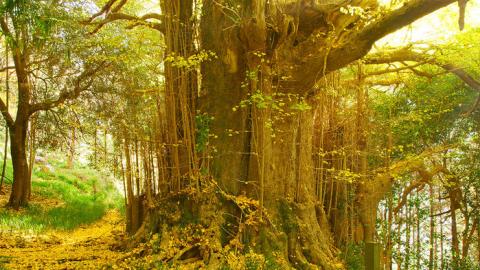
Long-lived humans having nothing on trees. Some forest giants, like the Ginkgo biloba, can live more than 3000 years. Now, in the most comprehensive plant aging study to date, researchers have revealed the molecular mechanisms that allow the ginkgo—and perhaps other trees—to survive so long.
The new study provides the first real genetic evidence for something scientists have long suspected: “The default condition in plants is immortality,” says Howard Thomas, a plant biologist from Aberystwyth University who was not involved in the work.
To make this bold claim, researchers started with thin cores from 34 healthy G. biloba trees in Anlu, in China’s Hubei province, and Pizhou, in Jiangsu province. (Excising the cores did not harm the trees.) Examining the growth rings, Li Wang, a plant molecular biologist at Yangzhou University, and colleagues discovered that the ginkgos’ growth didn’t slow down after hundreds of years—in fact, their growth rates sometimes sped up. What’s more, the leaf size, photosynthetic ability, and seed quality of the trees—all indicators of health—didn’t differ with age.

